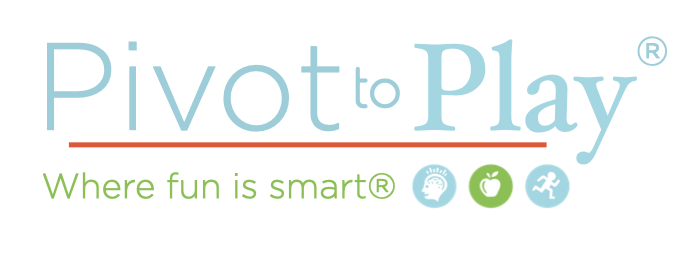Topic 6: What More Can We Do?
Vestibular system development comes with movement, plain and simple. For toddlers and pre-walkers try anything that involves:
- Bouncing
- Swinging
- Hanging Upside Down
For preschool and older children include:
- Riding a bike
- Swinging
- Rocking in a rocking chair
- Lying on the couch head down and looking at the ceiling
- Rhythmic bouncing or rolling on a large exercise ball
- Hoppy balls
- Cartwheels
- Somersaults
- Log rolling
- Walking backwards
- Riding in a wagon, on a sled
- Pulling a child in a blanket
- Jumping down from a higher level
- Sit and Spin
- Spinning in an office chair
- Scooter Boards
- Dancing
- Marching
- Jumping rope
- Sliding
- Climbing on playground equipment
- Passing a ball over head and under legs
- Swimming
- Obstacle course with over, under, through, soft and hard surfaces, balance challenges
- Hanging upside down
- Yoga, particularly inverted poses
Spinning
Remember, spinning is a very powerful tool when it comes to vestibular stimulation. Because spinning is the most intense of all sensory experiences, vestibular seekers (those hyposensitive kids we talked about earlier) will love to spin.
So, let them spin! Let them determine how long and how hard to spin, making sure the environment is safe. If you have a child who is obsessed with spinning, like my sweet friend, encourage some other vestibular choices, too.
For the hypersensitive vestibular avoiders, spinning can be very scary. You can encourage these kids to try to spin gently for short bursts – 10 seconds in one direction and 10 seconds in the other. As their systems mature, they will be able to spin longer and enjoy it more. Forcing kids who have trouble processing sensory information to spin long and hard can backfire, and the effects may not show up until much later when the brain finally gives up trying to process all of that input.
Toe Walking
Children often tip toe when they begin learning to walk. This may be because the sensation of the floor on the entire foot is unpleasant, or it may be to test out different positions the foot can have while walking. Usually by age 3 children put their entire foot on the floor to walk and by age 5 they should be walking in the heel-toe pattern.
Most children stop toe walking by age 5. Most children who continue to toe walk after age 5 are idiopathic toe walkers, meaning they do it out of habit. For some unknown reason idiopathic toe walking tends to run in families. However, some children continue to walk on their toes long after they should be putting their heels down on the floor for reasons other than habit.
We are born with two specific reflexes in our foot muscles which are directly tied to brain development and neural wiring. In normal development, those reflexes progress to a dormant state. If they do not go dormant, they can interfere with development later on. In other words, we need to put our entire foot on the ground to support a sensory pathway that goes all the way up to the cortex and back down again, supporting a motor-sensory connection for development and learning.
Children who toe walk can have challenges with the vestibular system, balance, visual processing and language development. We always encourage our toe walking friends to put their heels down while they move and look for opportunities for them to lengthen the calf muscles by walking uphill, up a wedge, or on their heels.
W-sitting
You will encounter children who W-sit. As you recall, w-sitting, is when children sit on the ground with their knees in front, heels by their hips with their insteps facing down, toes out, causing their legs to make a “W” on the floor. This position is extremely stable, so when first learning to sit, children will sometimes use this position. But they should grow out of it around 2-3 years old.
W-sitting negatively impacts vestibular development because this stable sitting base does not help strengthen one important leg of the vestibular stool: the core. When children are 3 and older and still using this sitting position, it is extremely important to encourage them to choose a different way to sit. Legs straight out, to the side or criss cross applesauce are more appropriate choices.
